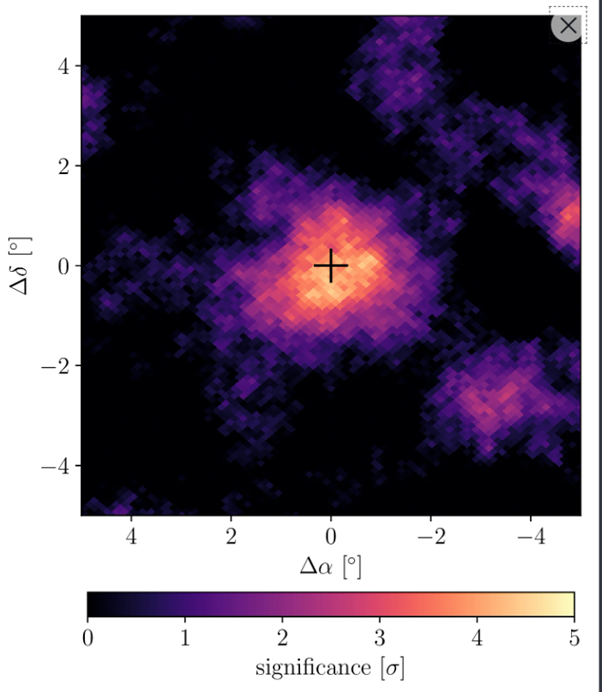Astronomers have detected an overabundance of gamma rays with an energy of around a trillion electron volts (TeV) coming from the Sun. Emission from the Sun in such a high energy range was thought to require quite rare circumstances, so the discovery of how common these are will require a rethink of how something this powerful could be made.
The Earth’s atmosphere blocks gamma rays far above the surface, which is just as well for us or cancer might be so frequent we’d never have evolved. Astronomers use gamma ray satellites to observe rays with energies up to 200 billion electron volts, but they’re not capable of detecting anything above that; the highest energy gamma rays have to be detected indirectly. When they strike the upper atmosphere, these rays produce a shower of particles and lower energy photons going in much the same direction. If these products pass through water, they produce what is known as Cherenkov radiation, an eerie glow produced by particles traveling faster than the speed of light within a material that can be seen under very dark conditions.
Using many tanks of water side-by-side, astronomers track when enough start glowing at once to indicate this sort of shower, and work out the energy and source of the gamma ray that must have triggered them.
There are not many instruments capable of doing this, and most of these only work at night. Consequently, we know more about high energy gamma rays coming from distant objects like supernovas or star formation regions than we do about any from our own Sun.
This didn’t particularly bother astronomers, because it was thought that such rays are produced in extreme environments, not a relatively placid, middle-aged star like the Sun. The only way the Sun was thought able to produce rays in the TeV range was if a cosmic ray from a more powerful source collided with a proton in the Sun. The number of such rays scattered in our direction was thought to be small.
Consequently, when Dr Mehr Un Nisa of Michigan State University and colleagues used the High Altitude Water Cherenkov Observatory (HAWC) to look for TeV gamma rays they were astonished to discover we’re on the receiving end of quite a lot. “After looking at six years’ worth of data, out popped this excess of gamma rays,” Nisa said in a statement. “When we first saw it, we were like, ‘We definitely messed this up. The sun cannot be this bright at these energies.'” HAWC found seven times more than the highest estimates for radiation at this range.
Further work confirmed the data was right. Indeed, the Sun is even producing some rays approaching 10 TeV, although there is no evidence of anything above these.

How the High-Altitude Water Cherenkov Observatory Collaboration sees the excess of high energy radiation from the Sun
Image Courtesy of the HAWC Collaboration
To get a grasp of how powerful these gamma rays are, consider that a photon of red light has an energy of around 1.8 eV, while blue light is about 3 eV. The X-rays used to scan your bones are 40,000 eVs, and a nuclear blast might produce gamma rays up to a few million eVs. 10 trillion electron volts is a whole different scale.
“The sun is more surprising than we knew,” Nisa said. “We thought we had this star figured out, but that’s not the case.”
So far the team doesn’t have an explanation of what forces within the Sun could produce so many high-energy particles – theoreticians will have their version of fun trying to work that out.
The blocking effects of the atmosphere mean we don’t need to worry about the biological consequences of these gamma rays, but estimates of dangers to astronauts on long flights may need adjusting.
The announcement of all these TeV solar gamma rays is published in the journal Physical Review Letters.
Source Link: Highest-Energy Gamma Rays Detected Coming From The Sun Can’t Be Explained